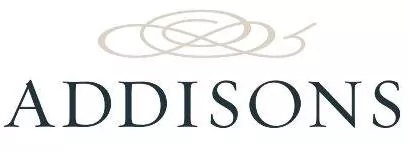On 15 April 2013 many of the provisions of the Intellectual Property Laws Amendment (Raising the Bar) Act 2012 ("Raising the Bar Act") came into effect.
Rights holders (Objectors) will be particularly interested in the changes to Australian Customs seizure procedures in relation to trade marks and copyright.
The changes brought about by the Raising the Bar Act are discussed below.
Seizure of Goods
Previously, the Designated Owner of goods suspected of trade mark or copyright infringement was notified that the goods had been seized by Customs. The seized goods were subsequently released to the Designated Owner if the Objector did not institute legal proceedings within 10 days of receiving notice of the seizure, or if the Designated Owner had not agreed to forfeit the seized goods.
The Raising the Bar Act significantly changed the process involved in seizing goods suspected of trade mark and/or copyright infringement by putting the responsibility on the Designated Owner of the seized goods to take action for the release of those goods. The Designated Owner will now only be able to reclaim the seized goods if it provides the Objector (via Australian Customs) with information sufficient for the Objector to identify and contact the Designated Owner/Importer of the goods.
Harsher penalties have also been introduced in order to deter counterfeiting. The maximum penalty for counterfeiters has been increased from 2 years to 5 years imprisonment and exemplary damages can now be imposed by the Courts.
As at 15 April 2013, the following changes took effect:
- The Designated Owner must make a claim for the release of the seized goods within 10 working days of receiving the Notice of Seizure from Customs. The claim for the goods must provide sufficient contact details of the sender of the goods if the Designated Owner wishes to be successful in its claim for the release of the goods.
- If the Designated Owner makes a claim for the release of goods then Customs must notify the Objector and the Objector will have 10 working days to institute proceedings against the Designated Owner or persuade the Designated Owner to agree to forfeit the goods. If this does not occur then the goods will be released to the Designated Owner.
- The Objector may inspect the seized goods and, subject to the provision of any requested undertakings, may remove multiple samples of the seized goods for further inspection/testing in order to accurately assess whether the seized goods infringe the Objector's rights.
- If the Objector has instituted legal proceedings against the Designated Owner within the 10 working days of receiving notice from Customs that the Designated owner has made a claim for the seized goods, and notified Customs of the proceedings, then the seized goods will not be released to the Designated Owner.
- If no claim for the seized goods is made by the Designated Owner, then they are automatically forfeited to the Commonwealth.
- Forfeited goods will be disposed of after the expiration of 30 days since the forfeiture of the goods. Similarly, where a claim for release is made by the Designated Owner who fails to collect the goods within 90 days, the goods are then forfeited to the Commonwealth.
Provision of information
Currently Customs notifies the Objector of the following information when goods suspected of trade mark or copyright infringement are seized:
- a description of the seized goods (possibly photos); and
- the full name and address of the person whom the goods are being shipped to (the Designated Owner of the goods).
From 15 April 2013, the Objector will also be provided with:
- the details of the sender of the goods (i.e foreign supplier or exporter) and any other personal information that may assist in the identification of the sender of the goods; and
- any information that Customs may have on record about the Designated Owner of the goods.
What you need to know
These significant changes to the powers of Customs in dealing
with seized goods is likely to result in far more counterfeit goods
being forfeited, and greater protection of the rights of trade mark
and copyright rights holders.
Further, rights holders will now be given information identifying
the source of the counterfeit goods which should assist in
identifying and taking steps against those parties if required. If
you have Customs Notices in place, then these changes will
automatically take effect. If you have copyright or trade mark
rights covered by the Customs Notice Procedures, then you should
consider lodging relevant Notices and taking advantage of these
changes to assist in your brand protection and anti-counterfeiting
strategies in Australia.
The assistance of Melissa Corbutt, Solicitor, of Addisons in the preparation of this article is noted and greatly appreciated.
The content of this article is intended to provide a general guide to the subject matter. Specialist advice should be sought about your specific circumstances.

